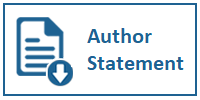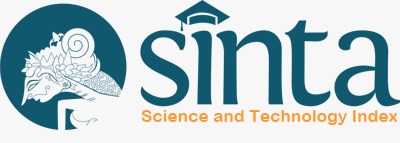Communicating the Crisis: Study on the Local Government's Twitter Accounts During the Covid-19 Pandemic in Indonesia
DOI:
https://doi.org/10.31937/ultimacomm.v15i1.2899Keywords:
Covid-19, Crisis Communication, Big Data, Social Media, Twitter, Local GovernmentAbstract
Along with the increasing number of victims of COVID-19, the amount of information requested by the public on social media also continues to increase. The emergence of various hoaxes that can influence individual behavior is also an urgent reason for the government to come and contribute. Although the urgency of the government's presence on social media at the time of the COVID-19 pandemic has been recognized, not many studies have looked at this presence, especially whether their presence is beneficial. For this reason, the goal to be achieved in this research is whether local governments provide sufficient and appropriate information required by the Indonesian during the pandemic. This study analyzes the Twitter accounts of local governments in Indonesia that have implemented Large-Scale Social Restrictions (PSBB) by taking tweets for content analysis and replies, retweets, and likes, to see the stakeholder engagement index (SEI). The results of this study indicate that information about reporting on the situation is the content most commonly shared by local governments through their Twitter accounts. The findings also show that the Tangerang Regency Government Twitter account has the highest Stakeholder Engagement Index, indicating the high level of public participation in information shared by the government through Twitter social media accounts. Academically this research fills the gaps between communication streams in crises by providing the need for and availability of information that, in practical terms, can be used to guide the creation of social media content during a pandemic.
Downloads
References
Avery, E. J., & Graham, M. W. (2013). Political public relations and the promotion of participatory, transparent government through social media. International Journal of Strategic Communication, 7(4), 274–291. https://doi.org/10.1080/1553118X.2013.824885
Bellström, P., Magnusson, M., Pettersson, J. S., & Thorén, C. (2016). Facebook usage in a local government: A content analysis of page owner posts and user posts. Transforming Government: People, Process and Policy, 10(4), 548–567. https://doi.org/https://doi.org/10.1108/ TG-12-2015-0061
Benny, G., Gill, S. S., & Moorthy, R. (2018). Disaster Communication in Managing Vulnerabilities. Jurnal Komunikasi, Malaysian Journal of Communication, 34(2), 51–66. https://doi.org/10.17576/jkmjc-2018-3402-04
Bonson, E., Royo, S., & Ratkai, M. (2017). Facebook Practices in Western European Municipalities: An Empirical Analysis of Activity and Citizens' Engagement. Administration & Society, 49(3), 320–347. https://doi.org/10.1177/0095399714544945
Bonsón, E., Royo, S., & Ratkai, M. (2015). Citizens' engagement on local governments' facebook sites. an empirical analysis: The impact of different media and content types in western europe. Government Information Quarterly, 32(1), 52–62. https://doi.org/10.1016/j.giq.2014.11.001
Bonsón, E., Torres, L., Royo, S., & Flores, F. (2012). Local e-government 2 . 0"¯: Social media and corporate transparency in municipalities. Government Information Quarterly, 29(2), 123–132. https://doi.org/10.1016/j.giq.2011.10.001
Bruns, A., Burgess, J., Crawford, K., & Shaw, F. (2012). #qldfloods and @QPSMedia: Crisis Communication on Twitter in the 2011 South East Queensland Floods. In ARC Centre of Excellence for Creative Industries and Innovation. https://doi.org/10.1007/978-3-642-39527-7_16
Chen, Q., Min, C., Zhang, W., Wang, G., Ma, X., & Evans, R. (2020). Unpacking the black box: How to promote citizen engagement through government social media during the COVID-19 crisis. Computers in Human Behavior, 110(March), 106380. https://doi.org/10.1016/j.chb.2020.106380
Ewart, J., & McLean, H. (2019). Best practice approaches for reporting disasters. Journalism, 20(12), 1573–1592. https://doi.org/10.1177/1464884918757130
FULK, J., STEINFIELD, C. W., SCHMITZ, J., & POWER, J. G. (1987). A Social Information Processing Model of Media Use in Organizations. Communication Research, 14(5), 529–552. https://doi.org/10.1177/009365087014005005
Graham, M. W., Avery, E. J., & Park, S. (2015). The role of social media in local government crisis communications. Public Relations Review, 41(3), 386–394. https://doi.org/10.1016/j.pubrev.2015.02.001
Houston, J. (2012). Public disaster mental/behavioral health communication: Intervention across disaster phases. Journal of Emergency Management, 10(4), 283–292. https://doi.org/10.5055/jem.2012.0106
Houston, J. Brian, Hawthorne, J., Perreault, M. F., Park, E. H., Goldstein Hode, M., Halliwell, M. R., Turner McGowen, S. E., Davis, R., Vaid, S., McElderry, J. A., & Griffith, S. A. (2015). Social media and disasters: a functional framework for social media use in disaster planning, response, and research. Disasters, 39(1), 1–22. https://doi.org/10.1111/disa.12092
Houston, J B, Hawthorne, J., Perreault, M. F., Park, E. H., Hode, M. G., Halliwell, M. R., McGowen, S. E. T., Davis, R., Vaid, S., McElderry, J. a, & Griffith, S. a. (2014). Social media and disasters: a functional framework for social media use in disaster planning, response, and research. Disasters, 39(1), 1–22. https://doi.org/10.1111/disa.12092
Hua, J., & Shaw, R. (2020). Corona virus (Covid-19) "infodemic” and emerging issues through a data lens: The case of china. International Journal of Environmental Research and Public Health, 17(7). https://doi.org/10.3390/IJERPH17072309
Ishii, K., Lyons, M. M., & Carr, S. A. (2019). Revisiting media richness theory for today and future. Human Behavior and Emerging Technologies, 1(2), 124–131. https://doi.org/10.1002/hbe2.138
Keim, M. E., & Noji, E. (2011). Emergent use of social media: a new age of opportunity for disaster resilience. American Journal of Disaster Medicine, 6(1), 47. https://doi.org/10.5055/ajdm.2010.0000
Kumar, S., Barbier, G., Ali Abbasi, M. A., & Liu, H. (2011). TweetTracker: An Analysis Tool for Humanitarian and Disaster Relief. Fifth International AAAI Conference on Weblogs and Social Media, 661–662. https://doi.org/10.1145/1935826.1935854
Lindsay, B. R. (2011). Social Media and Disasters: Current Uses, Future Options and Policy Considerations. In Congressional Research Service Reports. https://doi.org/R41987
Liu, B. F., Fraustino, J. D., & Jin, Y. (2016). Social Media Use During Disasters. Communication Research, 43(5), 626–646. https://doi.org/10.1177/0093650214565917
Lundgren, R. E., & McMakin, A. H. (2009). Risk communication: A handbook for communicating environmental, safety, and health risks (L. Hanzo (ed.); IV). Wiley.
Mauroner, O., & Heudorfer, A. (2016). Social media in disaster management: How social media impact the work of volunteer groups and aid organisations in disaster preparation and response. International Journal of Emergency Management, 12(2), 196–217. https://doi.org/10.1504/IJEM.2016.076625
Mossberger, K., Wu, Y., & Crawford, J. (2013). Connecting citizens and local governments? Social media and interactivity in major U.S. cities. Government Information Quarterly, 30(4), 351–358. https://doi.org/10.1016/j.giq.2013.05.016
Orso, D., Federici, N., Copetti, R., Vetrugno, L., & Bove, T. (2020). Infodemic and the spread of fake news in the COVID-19-era. European Journal of Emergency Medicine, 1. https://doi.org/10.1097/mej.0000000000000713
Pulido, C. M., Villarejo-Carballido, B., Redondo-Sama, G., & Gómez, A. (2020). COVID-19 infodemic: More retweets for science-based information on coronavirus than for false information. International Sociology, 026858092091475. https://doi.org/10.1177/0268580920914755
Radecki, R. P., & Spiegel, R. S. (2020). Avoiding Disinformation Traps in COVID-19. Annals of Emergency Medicine. https://doi.org/10.1016/j.annemergmed.2020.05.002
Sáez Martín, A., Haro de Rosario, A., & Caba Pérez, M. D. C. (2015). Using Twitter for Dialogic Communication: Local Government Strategies in the European Union. Local Government Studies, 41(3), 421–444. https://doi.org/10.1080/03003930.2014.991866
Santoso, A. D. (2017). Tweeting in Disaster Area: An Analysis of Tweets during 2016 Mayor Floods in Indonesia. Policy & Governance Review, 1(3), 178. https://doi.org/10.30589/pgr.v1i3.55
Santoso, A. D. (2019). Tweets Flooded in Bandung 2016 Floods: Connecting Individuals and Organizations to Disaster Information. Indonesian Journal of Geography, 51(3), 242–250. https://doi.org/10.22146/ijg.34767
Shereen, M. A., Khan, S., Kazmi, A., Bashir, N., & Siddique, R. (2020). COVID-19 infection: Origin, transmission, and characteristics of human coronaviruses. In Journal of Advanced Research (Vol. 24, pp. 91–98). Elsevier B.V. https://doi.org/10.1016/j.jare.2020.03.005
Shih, P. C., Han, K., & Carroll, J. M. (2015). Using Social Multimedia Content to Inform Emergency Planning of Recurring and Cyclical Events in Local Communities. Journal of Homeland Security and Emergency Management, 12(3), 627–652. https://doi.org/10.1515/jhsem-2014-0071
Takahashi, B., Tandoc, E. C., & Carmichael, C. (2015). Communicating on Twitter during a disaster: An analysis of tweets during Typhoon Haiyan in the Philippines. Computers in Human Behavior, 50, 392–398. https://doi.org/10.1016/j.chb.2015.04.020
Taylor, B. M., Wells, G., Howell, G., & Raphael, B. (2012). The role of social media as psychological first aid as a support to community resilience building . The Australian Journal of Emergency Management, 27(1), 20–26.
Xiao, Y., Huang, Q., & Wu, K. (2015). Understanding social media data for disaster management. Natural Hazards, 79(3), 1663–1679. https://doi.org/10.1007/s11069-015-1918-0
Yin, R. K. (2014). Cast Study Research: design and methods. Sage. https://doi.org/10.1017/CBO9780511803123.001
Downloads
Published
How to Cite
Issue
Section
License
Ultimacomm Jurnal Ilmu Komunikasi allows readers to read, download, copy, distribute, print, search, or link to its articles' full texts and allows readers to use them for any other lawful purpose. The journal allows the author(s) to hold the copyright without restrictions. Finally, the journal allows the author(s) to retain publishing rights without restrictions
1. Authors are allowed to archive their submitted article in an open access repository
2. Authors are allowed to archive the final published article in an open access repository with an acknowledgment of its initial publication in this journal














